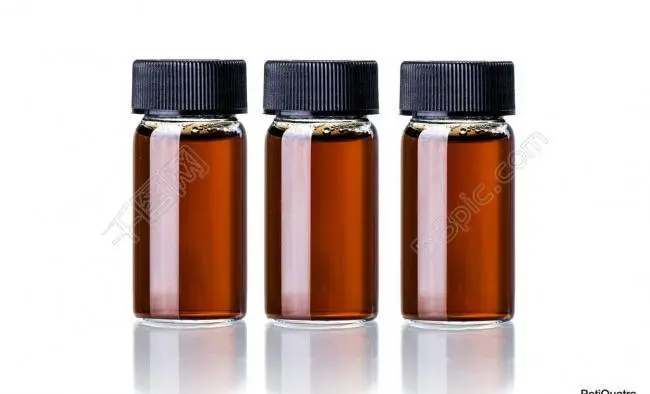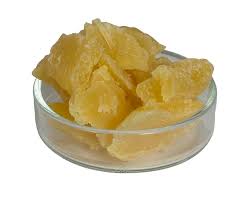**Title: The Secret Sauce: Getting Your Surfactant Mix Just Right for Glyphosate**
(How Much Surfactant To Use With Glyphosate)
Glyphosate. It’s the big gun in the weed control arsenal. Farmers trust it. Gardeners rely on it. But sometimes, it just doesn’t seem to hit as hard as it should. Ever wonder why? Often, the missing piece is surfactant. And getting the *amount* right? That’s the real trick. This isn’t just about dumping stuff in a tank. It’s about making your glyphosate work smarter, not harder. Let’s break down the surfactant-glyphosate partnership.
**Main Product Keywords:** Surfactant, Glyphosate
**1. What Exactly IS a Surfactant (And Why Should You Care)?**
Think about washing greasy dishes. Water alone beads up and rolls off. Add dish soap, and suddenly the water spreads out, grabs the grease, and cleans. That dish soap? It’s acting like a surfactant. The word “surfactant” comes from “surface active agent.” Its job is simple: change how liquids behave on surfaces. In weed control, surfactants do two big things. First, they help the spray droplets stick to the leaf instead of bouncing off or rolling away. Second, they help the spray spread out into a thin film, covering more of the leaf. Third, they help the glyphosate actually get *into* the plant. Many weeds have waxy or hairy leaves. These act like a raincoat, repelling water-based sprays. A surfactant breaks through this barrier. It lets the glyphosate penetrate the leaf surface effectively. Without it, a lot of your expensive herbicide might just sit there uselessly. Not all surfactants are the same. Some are designed specifically for herbicides like glyphosate. These are often called “non-ionic surfactants” or “NIS”. They are generally the best choice for mixing with glyphosate products.
**2. Why Glyphosate REALLY Needs That Surfactant Boost**
Glyphosate itself isn’t great at sticking to leaves or penetrating them. It’s a systemic herbicide. This means it needs to be absorbed *into* the plant. Then it travels down to the roots to kill the whole weed. If it just sits on the leaf surface, it won’t work well. Sunlight can break it down. Rain can wash it off. Many tough weeds have evolved defenses. Thick, waxy cuticles are common. Hairs on leaves trap spray droplets, keeping them away from the surface. These features make it very hard for glyphosate alone to get in. Adding the right surfactant changes everything. It reduces the surface tension of the spray solution. Imagine the spray droplet hitting the leaf. With surfactant, it flattens out instead of staying in a tight bead. This creates much better contact. The surfactant also disrupts the waxy layer on the leaf. It creates pathways for the glyphosate to enter the plant tissue. Essentially, the surfactant unlocks the door for glyphosate. Without it, glyphosate is knocking weakly. With it, glyphosate kicks the door down. The result is faster, more complete weed kill, especially on hard-to-control species.
**3. How Much Surfactant Do You Actually Need? Finding the Sweet Spot**
This is the million-dollar question. Too little surfactant, and you don’t get the penetration boost. Too much, and you might cause problems. You could damage sensitive crops nearby. You might even reduce glyphosate’s effectiveness. So, what’s the magic number? **Always, always, always check the glyphosate product label first.** It is the law. It has the most accurate, specific instructions. Labels vary. They depend on the glyphosate concentration, the formulation, and the target weeds. Generally, a common rate for non-ionic surfactants (NIS) is **0.25% to 1.0% of the total spray volume by volume (v/v).** Let’s make that clear. For every 100 gallons of spray solution in your tank, you’d typically add between 1 quart (0.25% of 100 gal = 0.25 gal = 1 qt) and 1 gallon (1.0% of 100 gal = 1 gal) of surfactant. Many labels settle around **0.5% v/v** as a standard starting point. That’s half a gallon per 100 gallons of spray mix. Consider these factors:
* **Weed Type:** Tough, waxy weeds (like velvetleaf, morning glory, sedges) often need the higher end of the surfactant range (0.75% – 1.0%).
* **Water Quality:** Hard water (high in calcium, magnesium) can bind with glyphosate. More surfactant (or using ammonium sulfate – AMS – first) might be needed.
* **Glyphosate Formulation:** Some newer, “hotter” formulations might have built-in surfactants. The label will tell you if extra surfactant is needed or recommended. When in doubt, stick to the label rate. Measure carefully. Don’t just guess or pour. Use a measuring cup or container marked for ounces or milliliters. Adding surfactant correctly makes a huge difference in performance.
**4. Key Applications: Where Getting the Surfactant Right Matters Most**
Surfactant isn’t just for one job. It’s crucial across many situations where glyphosate is used:
* **Agricultural Fields (Corn, Soybeans, Cotton):** Controlling tough perennial weeds (like bindweed, johnsongrass) and resistant annual weeds demands optimal glyphosate uptake. Correct surfactant rate is vital for clean fields.
* **Orchards and Vineyards:** Managing weeds under trees and vines without harming the crop requires precise application. Surfactant ensures glyphosate hits the weeds effectively at lower spray volumes.
* **Pastures and Rangeland:** Invasive weeds (like thistles, knapweed) often have robust defenses. Adequate surfactant ensures glyphosate penetrates these tough plants for good control.
* **Industrial Sites, Fence Lines, and Roadsides:** Controlling established brush and perennial weeds in non-crop areas needs the full power of glyphosate. Surfactant boosts performance on woody stems and tough foliage.
* **Pre-Plant Burndowns (No-Till/Reduced-Till):** Before planting, killing existing vegetation quickly and completely is essential. Surfactant helps glyphosate work fast and thoroughly on a mix of winter annuals and emerging perennials.
* **Gardens and Landscapes (Spot Treatment):** Even for spot spraying weeds in driveways or garden paths, a little surfactant mixed with glyphosate concentrate makes the treatment much more effective, especially on mature weeds.
**5. FAQs: Clearing Up Common Surfactant & Glyphosate Questions**
* **Q1: Can I use dish soap as a surfactant with glyphosate?** A1: Not recommended. Dish soap is a detergent, not a true non-ionic surfactant. It can cause excessive foaming. It might damage sprayer components. It often lacks the specific properties needed for optimal herbicide performance. Use a proper agricultural surfactant.
* **Q2: My glyphosate says “premix” or “contains surfactant.” Do I need more?** A2: Check the label carefully. Many “premix” or “plus” formulations have surfactant already included. Adding extra surfactant is usually unnecessary. It could be harmful. The label will specify if additional surfactant is allowed or required.
* **Q3: What happens if I use too much surfactant?** A3: Overdosing can cause issues. It might increase the risk of spray drift. It could potentially cause leaf burn on desirable plants nearby. In rare cases, too much surfactant might even trap glyphosate on the leaf surface, reducing uptake. Stick to the label rate.
* **Q4: Is surfactant needed with every glyphosate application?** A4: Almost always yes, especially for reliable control of established or tough weeds. The main exception is if using a glyphosate formulation specifically labeled as not needing additional surfactant (like some “premix” types). When targeting small, young, succulent weeds in ideal conditions, surfactant might be slightly less critical, but still generally beneficial.
(How Much Surfactant To Use With Glyphosate)
* **Q5: How do I mix surfactant with glyphosate properly?** A5: Fill the spray tank with about half the required water. Start agitation. Add any required additives like ammonium sulfate (AMS) first, and let it dissolve. Then add the glyphosate concentrate. Finally, add the measured amount of surfactant. Top up the tank with the remaining water while keeping agitation running. Maintain agitation until spraying is complete. This order helps ensure good mixing and prevents potential issues.
Inquiry us
if you want to want to know more, please feel free to contact us.




